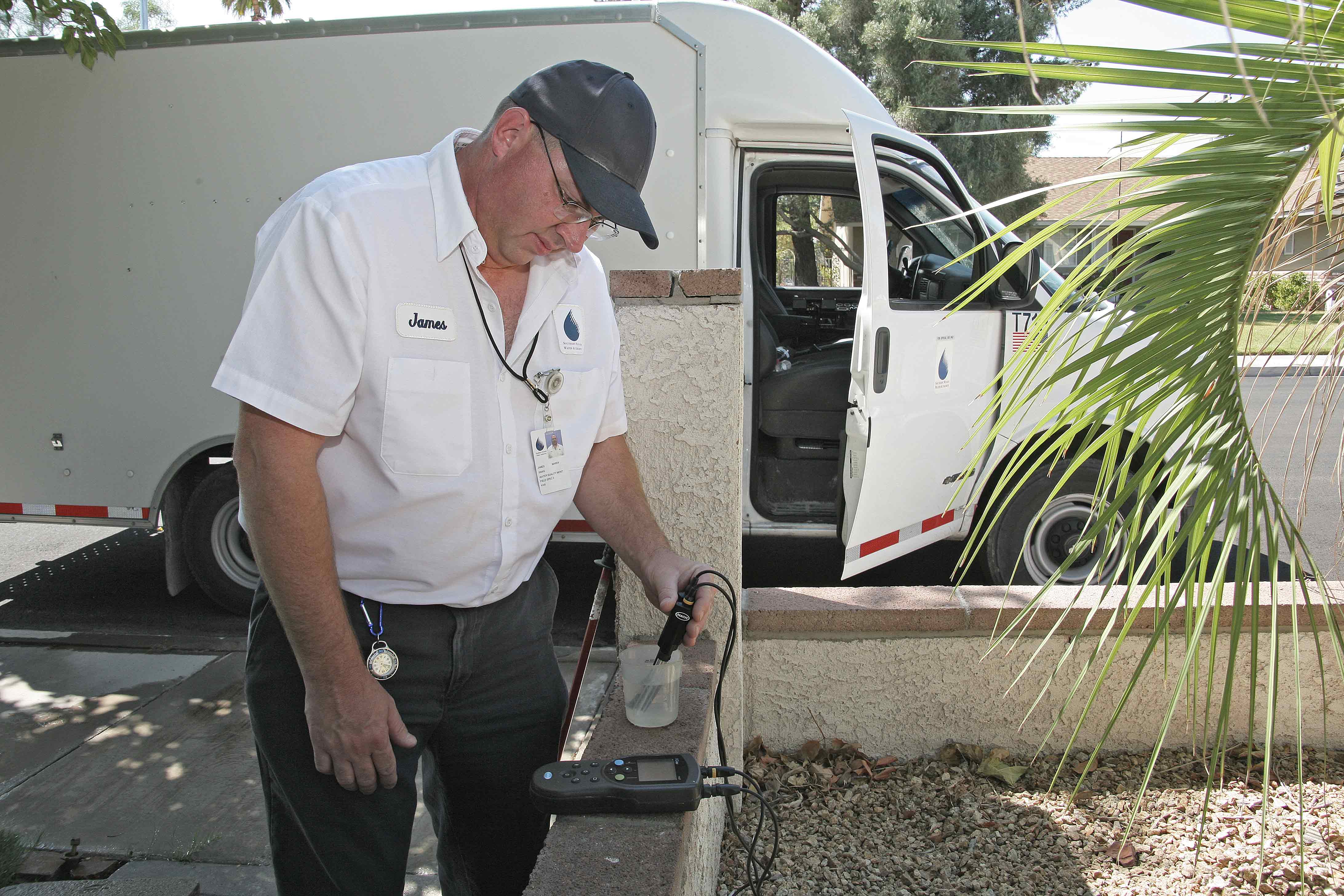
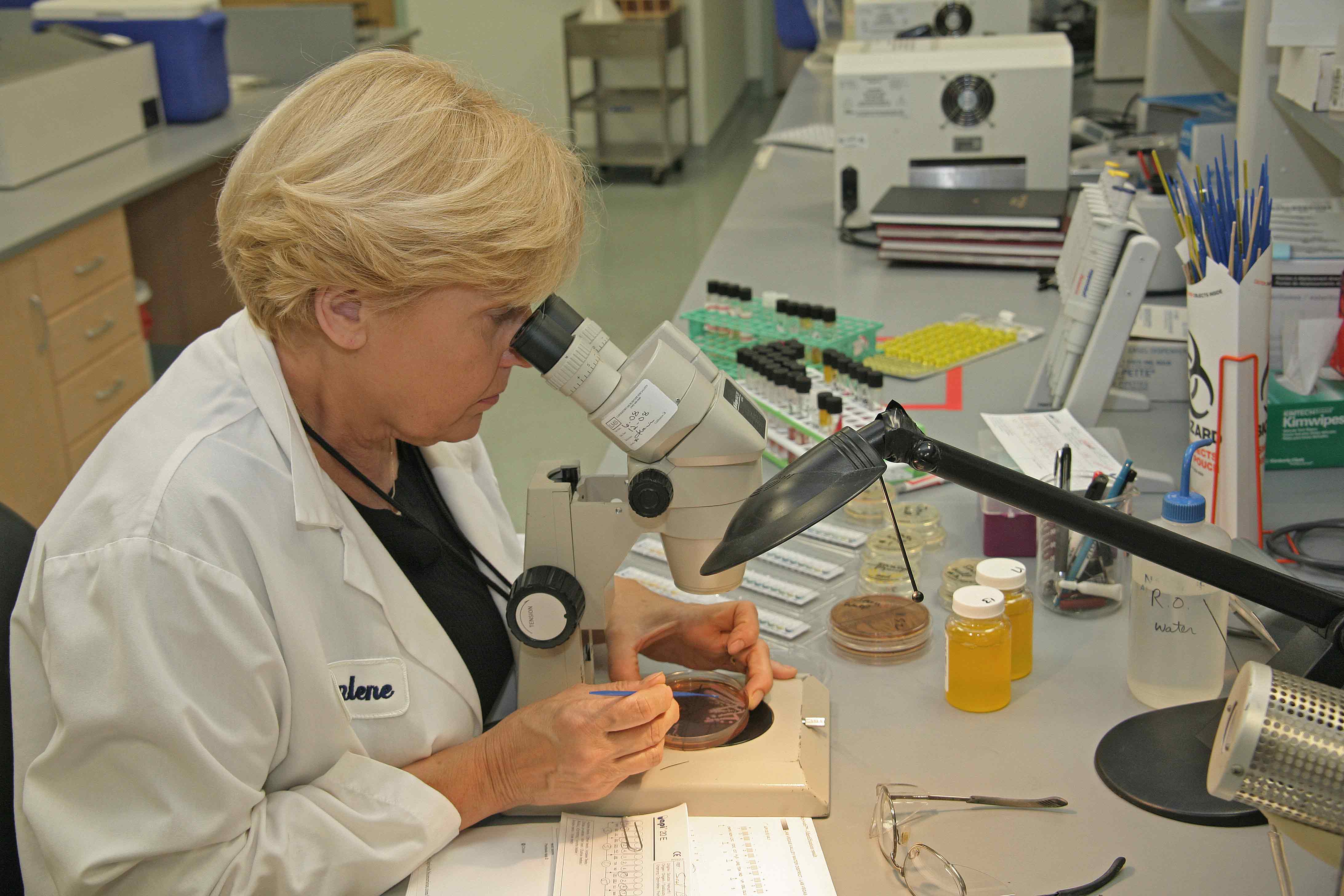
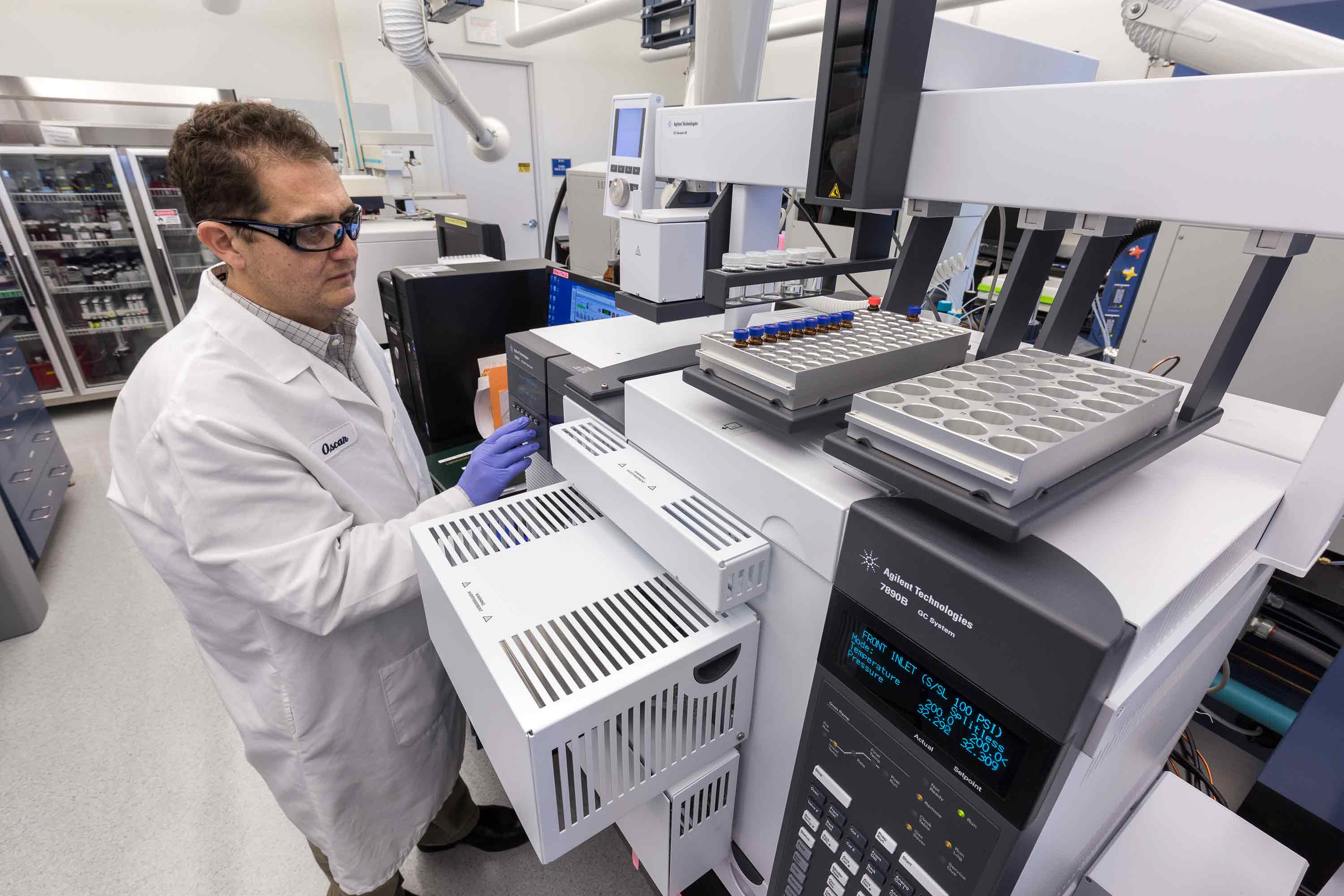
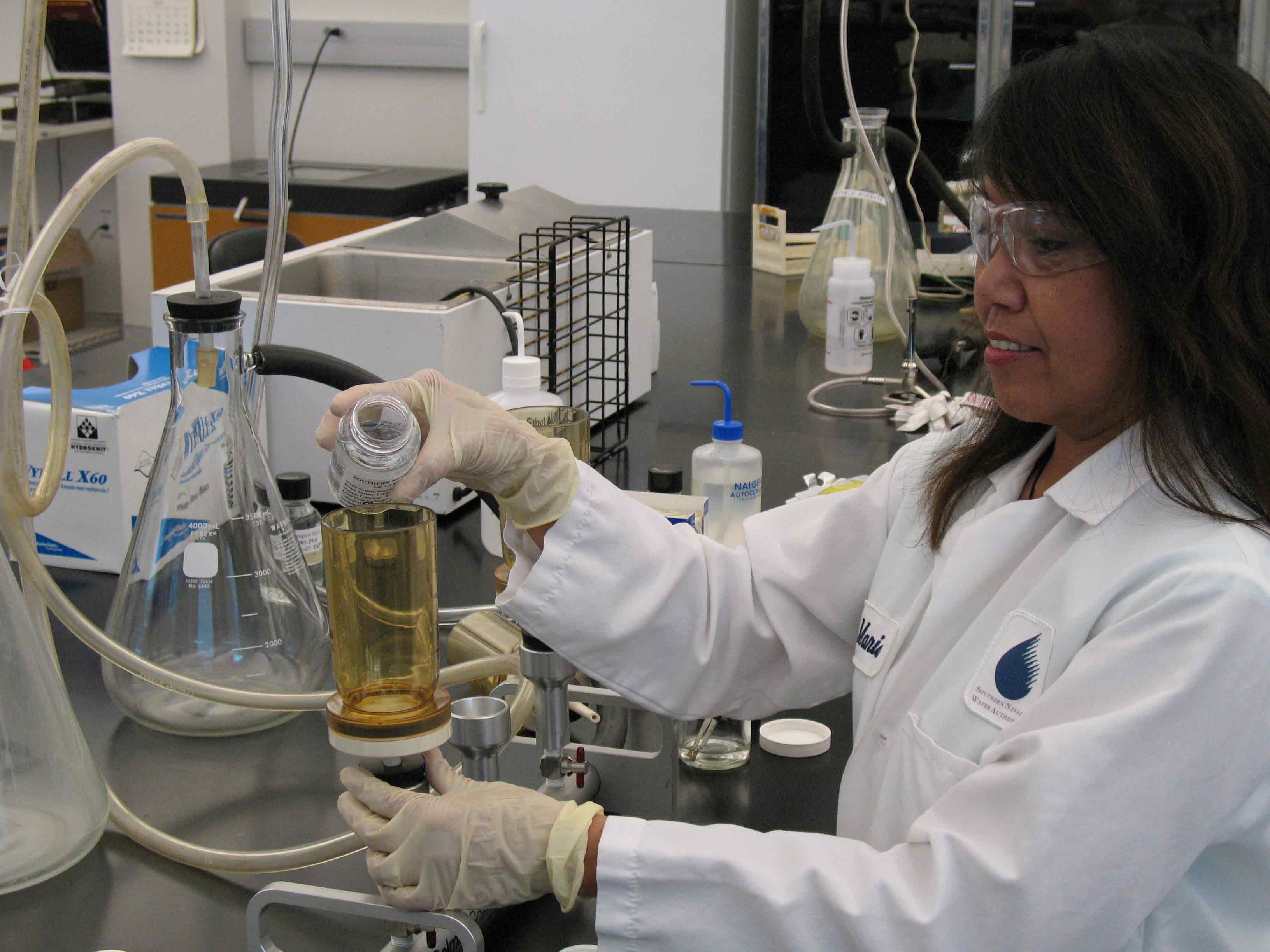
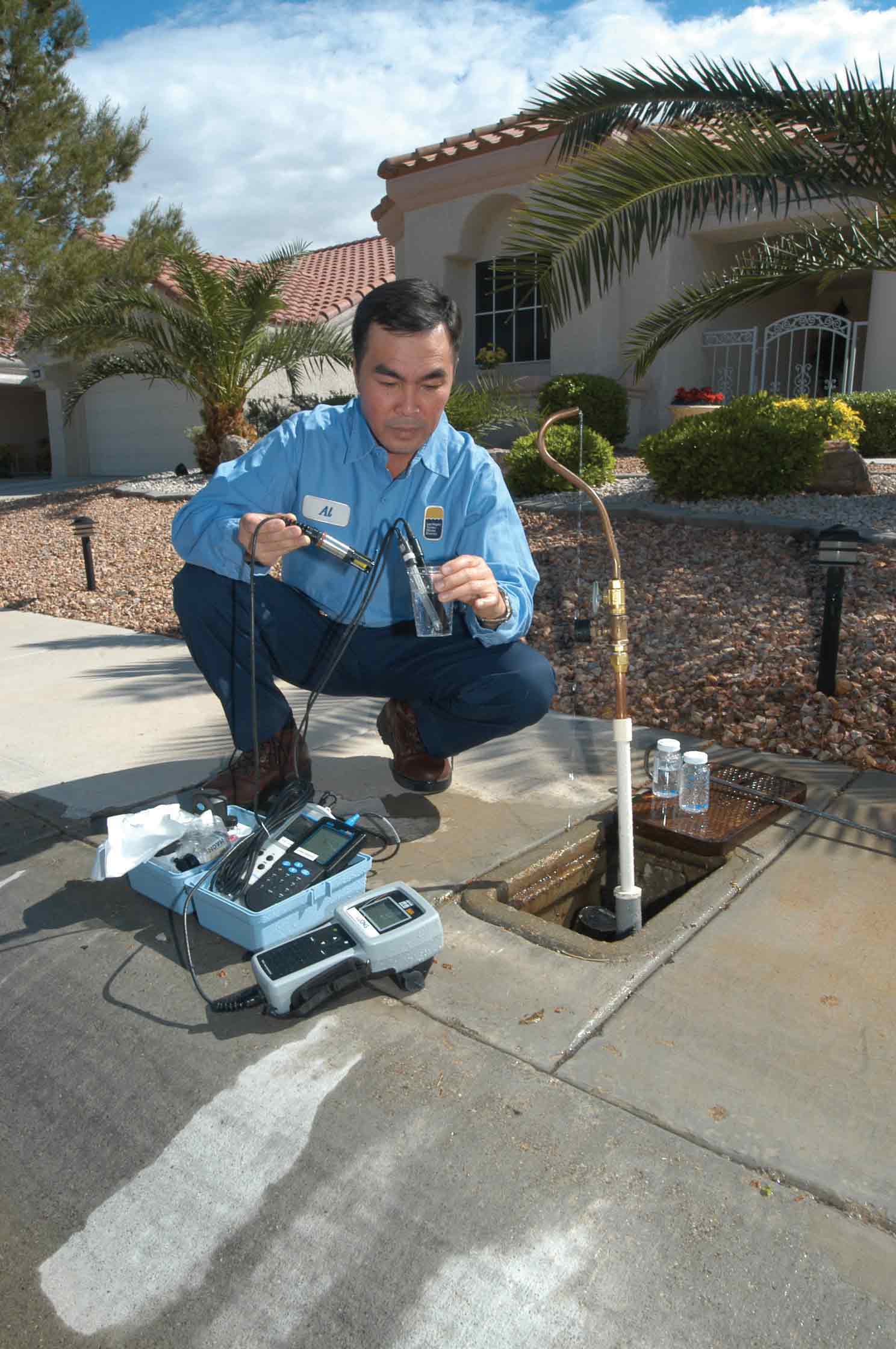
The Southern Nevada Water Authority (SNWA), which produces the vast majority of Southern Nevada’s drinking water on behalf of the Las Vegas Valley Water District (LVVWD) and other local water agencies, has long been recognized for the quality of its treatment facilities. After all, it is one of only 14 of the nation’s 50,000-plus community water systems to earn the elite Partnership for Safe Water Excellence in Water Treatment award.
However, the treatment facility only marks the start of the agencies’ efforts to protect the quality of the community’s drinking water. From the shores of Lake Mead and the foothills of the River Mountains, water goes on a long journey before emerging from kitchen faucets and shower heads throughout the valley. The LVVWD alone maintains approximately 4,000 linear miles of pipeline and another 2,500-plus miles of smaller service laterals that connect some 394,000 customers to their water supply.
Given the labyrinth of pipes through which water must travel before it reaches Southern Nevada’s homes and businesses, keeping a close eye on water quality is imperative. While the water is tested to ensure it meets or surpasses all state and federal health standards before it leaves the treatment facilities, factors such as temperature and even the length of time spent in the distribution system can change the water’s chemistry. If the changes are significant, operators can make adjustments right in the reservoirs, so protecting the water on its way to the tap becomes a collaborative effort involving trained professionals and sophisticated analytic instrumentation.
“Providing municipal customers a safe, reliable water supply is the mission,” explained SNWA Water Quality & Treatment Director Greg Kodweis, whose team manages the extensive monitoring program. “When people fill a glass of water from the tap, they need to be able to trust its safety. That premise is at the heart of our efforts; we use advanced technology and highly trained staff to optimize the quality of our community’s water supply.”
Laboratory field technicians use portable equipment such as the HACH DR300 Chlorine Meter to test water from neighborhood sampling ports located throughout the LVVWD’s service territory, carefully monitoring the water’s chlorine residual to ensure it is protected from bacteria. To measure parameters such as pH, conductivity, dissolved oxygen and temperature throughout the water distribution system, staff use the HACH HQ40D Multiparameter Meter. The Water Quality Monitoring team utilizes equipment like the Kupferle Sample Station, a small, self-contained apparatus designed to draw samples from water mains, to reliably collect bacteriological samples without the risk of false positive results. The ability to accurately collect and analyze water quality data in the field, rather than transporting samples back to the SNWA laboratory for processing, helps to characterize the quality of water in the distribution system at the time of sampling. This in turn allows the water operators to respond efficiently and effectively.
However, when it comes to testing, these field-based water quality checks are just the tip of the iceberg. Last year, SNWA laboratory and field technicians conducted nearly 300,000 analyses on more than 50,000 water samples from throughout Southern Nevada, looking at approximately 160 regulated and unregulated constituents. Special GIS-based software routes technicians so they can collect and deliver samples to the laboratory as quickly and efficiently as possible.
“It is not enough to know that the water was safe when it left the treatment plant,” Kodweis explained. “During winter, when consumption is at its lowest, several days may pass before a particular gallon of water reaches someone’s home. Meanwhile, it is making its way through the distribution system, with stops along the way at pumping stations and reservoirs. The only way to be sure we are delivering on our promise to customers is by continually monitoring water quality all the way from the treatment facility to the tap. Safe water is our mission, and the water quality monitoring program is critical to accomplishing it.”
For more information about the LVVWD’s water system, visit lvvwd.com.
Members of the editorial and news staff of the Las Vegas Review-Journal were not involved in the creation of this content.


